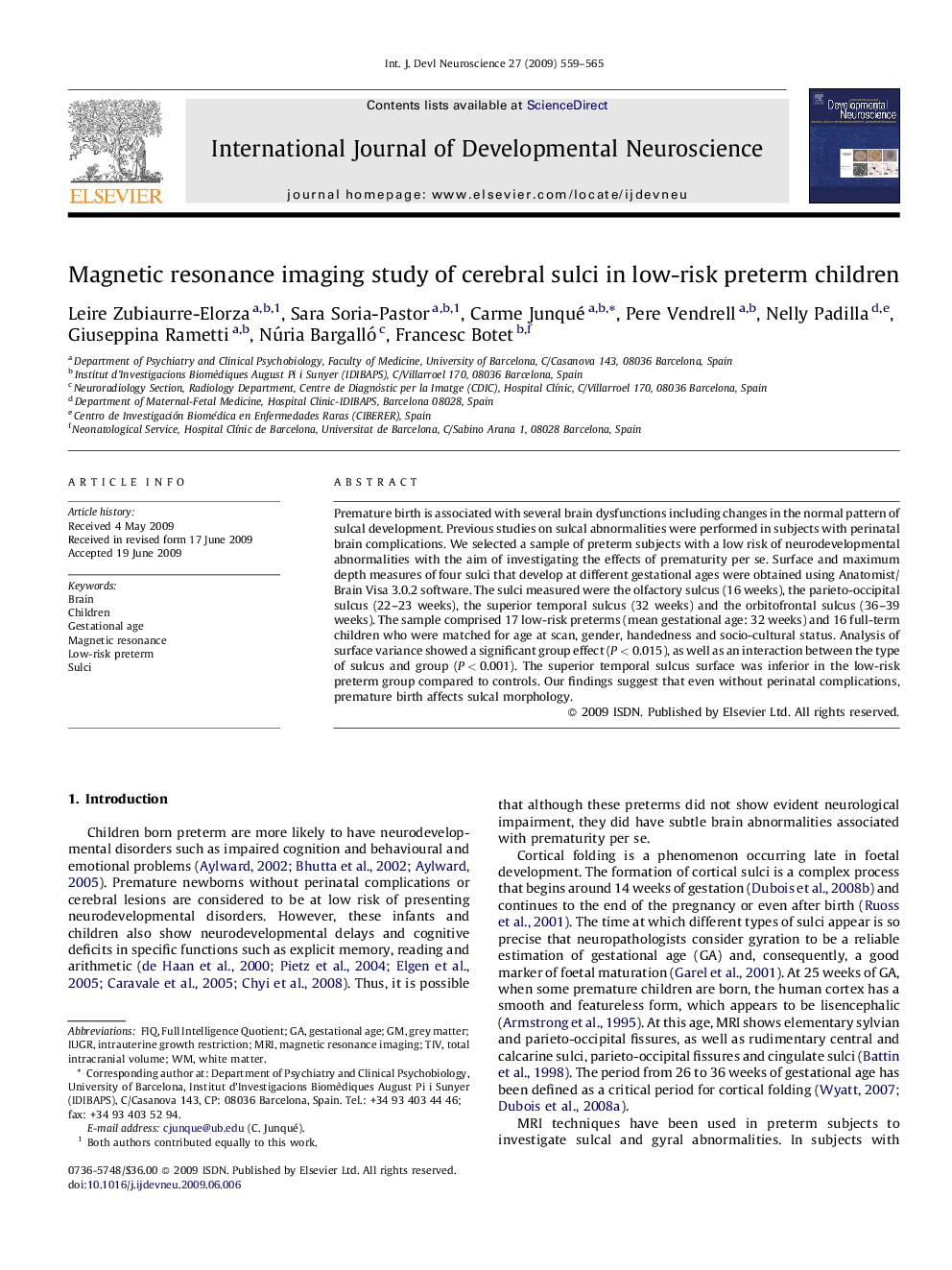| Article ID | Journal | Published Year | Pages | File Type |
|---|---|---|---|---|
| 2786935 | International Journal of Developmental Neuroscience | 2009 | 7 Pages |
Premature birth is associated with several brain dysfunctions including changes in the normal pattern of sulcal development. Previous studies on sulcal abnormalities were performed in subjects with perinatal brain complications. We selected a sample of preterm subjects with a low risk of neurodevelopmental abnormalities with the aim of investigating the effects of prematurity per se. Surface and maximum depth measures of four sulci that develop at different gestational ages were obtained using Anatomist/Brain Visa 3.0.2 software. The sulci measured were the olfactory sulcus (16 weeks), the parieto-occipital sulcus (22–23 weeks), the superior temporal sulcus (32 weeks) and the orbitofrontal sulcus (36–39 weeks). The sample comprised 17 low-risk preterms (mean gestational age: 32 weeks) and 16 full-term children who were matched for age at scan, gender, handedness and socio-cultural status. Analysis of surface variance showed a significant group effect (P < 0.015), as well as an interaction between the type of sulcus and group (P < 0.001). The superior temporal sulcus surface was inferior in the low-risk preterm group compared to controls. Our findings suggest that even without perinatal complications, premature birth affects sulcal morphology.
